Koskela keeps weaving traditions alive with Ngalya lamp collection
Australian design brand Koskela has collaborated with indigenous artisans to make a series of hand-woven lights using locally harvested plant materials and natural dyes.
The Ngalya lighting collection, which translates as "together", was created in celebration of Koskela's 10-year anniversary of working with Australia's First Peoples in social impact projects.
The project saw the brand work with aboriginal and Torres Strait Islander weavers from six art centres located across Australia to design a series of woven lampshades using native fibres, such as pandanus grass and bush string.
As the colourful lamps are handmade by the weavers, each one is unique – a product of the individual artist's interpretation.
The Ngalya collection has been longlisted in the Dezeen Awards 2019 within the lighting design category.
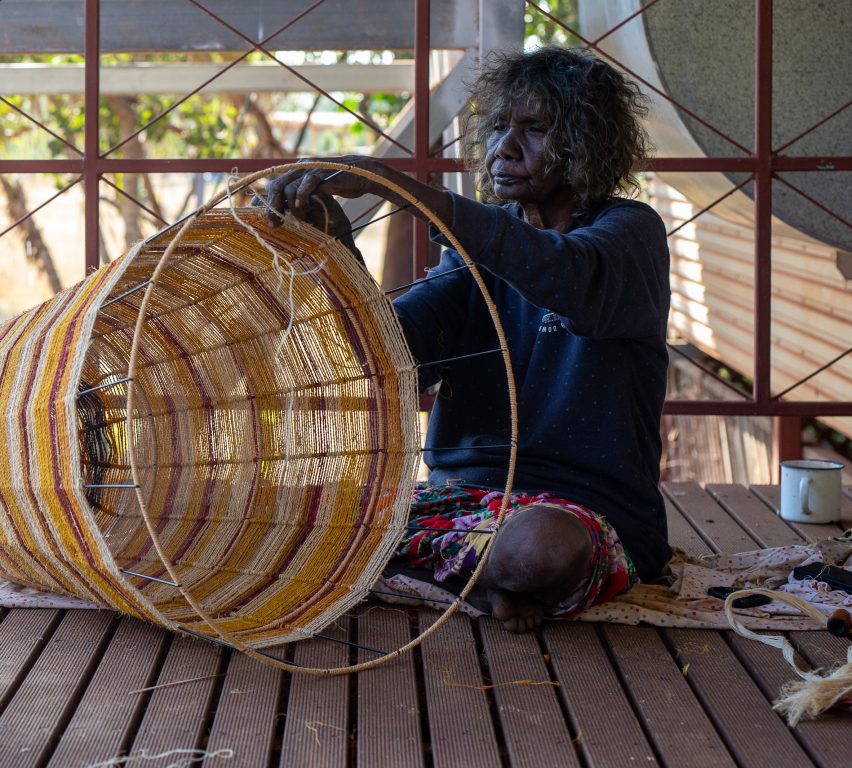
The lamps incorporate natural materials that have been used by Yolngu women for centuries to make objects for ceremonies, hunting and carrying goods.
"Koskela came to us with the idea of doing our weaving on lampshades, and I thought it would be interesting to take our traditional Yolngu materials and use them on Balanda objects," said Mavis Ganambarr, a senior weaver from Elcho Island.
Ganambarr feels that continuing to use these traditional techniques, which she was taught by her grandmother, and applying them to contemporary design is important in keeping their culture strong.
"We all thought this would be a good way to show a new audience what can be done by Yolngu artists with materials from the bush," Ganambarr said.
"It was an opportunity to try something new and show our artwork in a new light," she added.
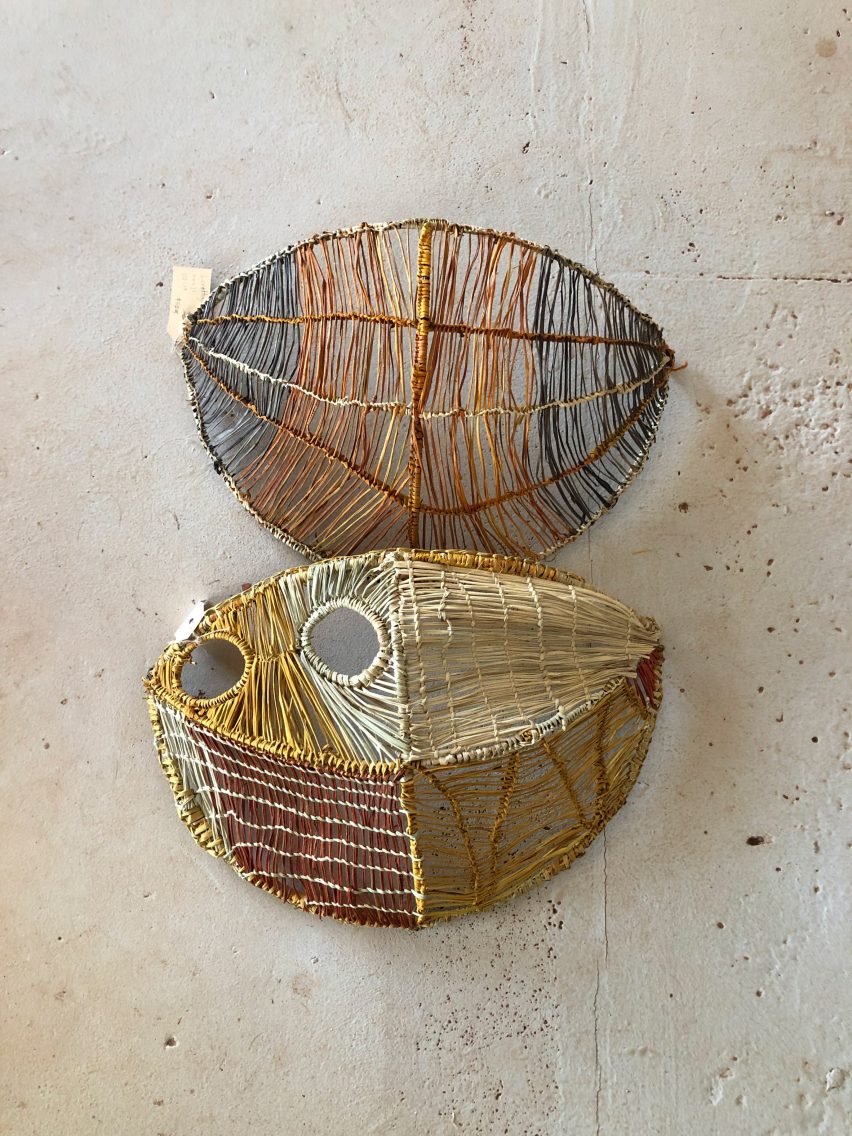
Koskela founders Russel Koskela and Sasha Titchkosky visited Elcho Island to better understand the labour-intensive process involved in making the lights.
A large lampshade could take up to a month for one of the women to complete. It involves going out into the bush to cut down the pandanus grass, which they use for weaving, and the kurrajong tree that they use to make bush string.
They then dye these materials with natural dyes extracted from plants found on the island, before weaving the pandanus or bush string on the lampshade frame.
"We took Sasha and Russel into the bush and said 'let's go shopping', and they said, 'where are the shops?'," explained Ganambarr.
"This made us laugh because for us the bush is our art materials shop, it is where we get all our materials from to do our artwork, it is all around us and it is free," she added.
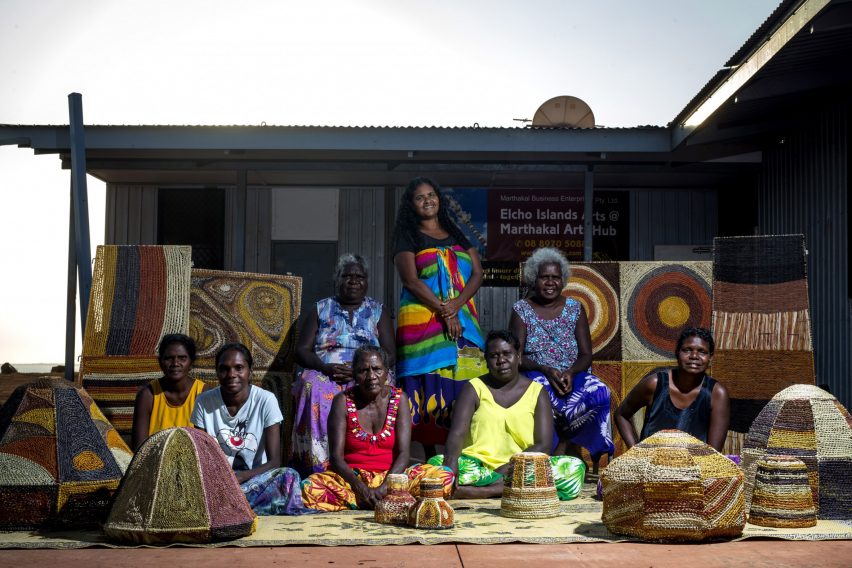
In addition to making statement "art products" for modern interiors, the Yuṯa Baḏayala project also aims to provide indigenous weavers with an additional stream of income from their work.
"Koskela believes that great design can be used to effect social change, and has a firm belief that Australia's unique indigenous culture is one that needs to be celebrated and acknowledged," said the brand.
"The way we have chosen to do this is to create opportunities for indigenous artists and artisans to collaborate with us, using their skills to create new contemporary design products," it added.
"This allows the artists to continue to live a life they have chosen to lead, maintaining their traditional practices by creating an alternate income source, independent of any government funding."
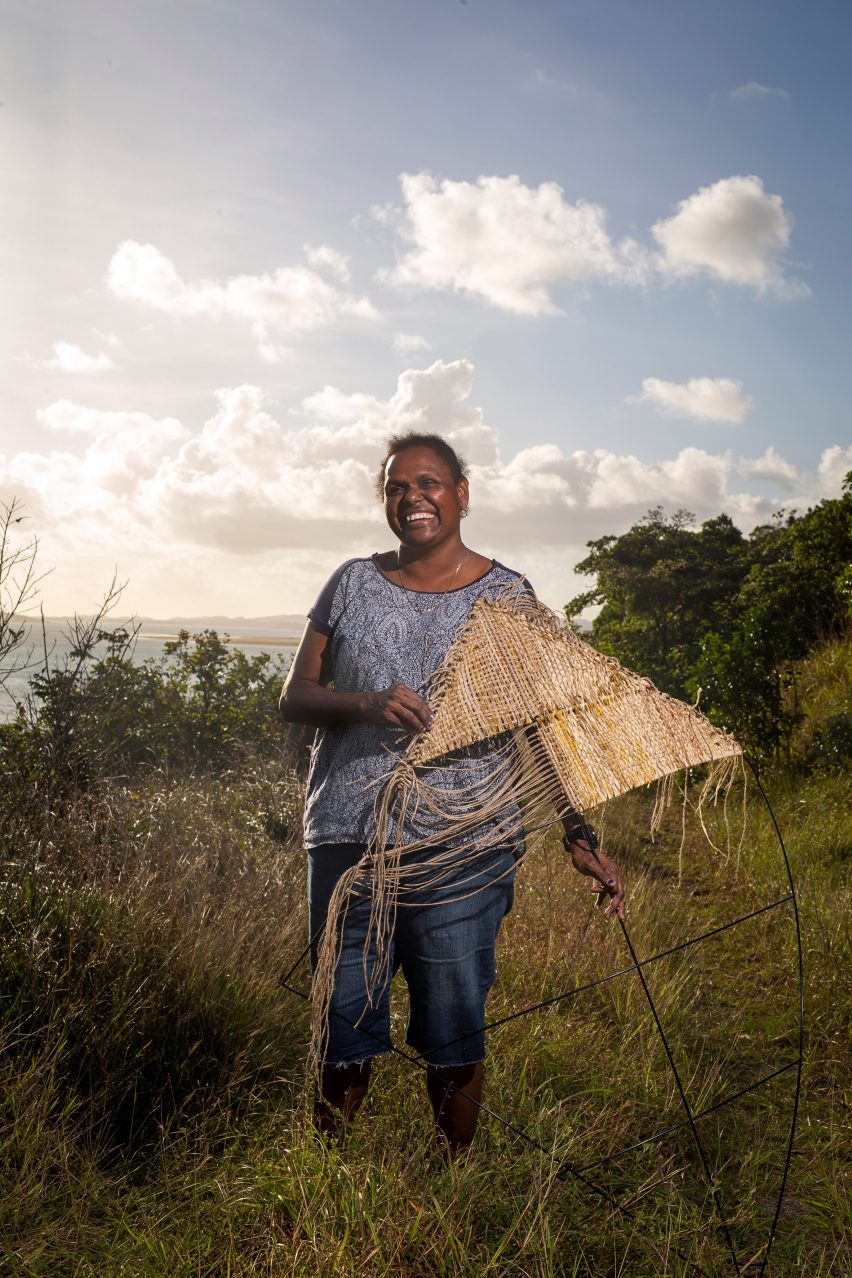
All the lampshades are woven on site at each artist's ancestral land and place of residence.
Koskela ships the custom frame-components to each community art centre, a journey of thousands of miles that requires three or more modes of transport.
Each frame is designed to be as light as possible, not only to reduce footprint during transport and to be able to be packed and stacked efficiently, but also in order to be carried easily by the weavers, as some are elderly.
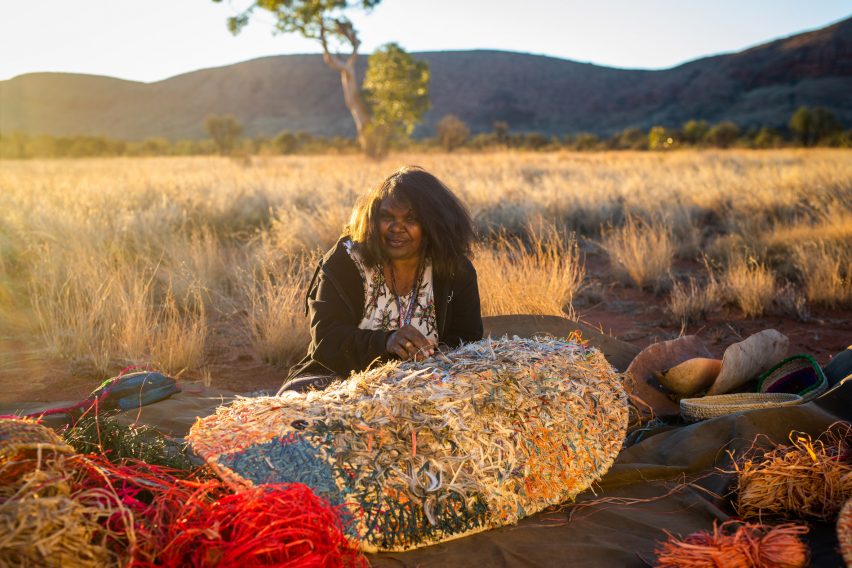
Koskela and Titchkosky hope that the lighting collaboration will lead to a resurgence in weaving, encouraging the young generation to adopt their mothers' and grandmothers' traditional skills.
"It is much more than a lighting range, it's a project that has reconciliation – the respect and acknowledgment of our first peoples – at its heart," they said.
"The end result is that the world's oldest continuous living culture is now in the homes and workspaces of people across the world, giving its makers immense pride, and reimagining indigenous cultural history and skills into new contemporary design products."
Hangzhou-based designer Jun Jie Zhang also utilised traditional weaving techniques with his Bamboo Softness lighting collection, which aims to show the softer qualities of bamboo.